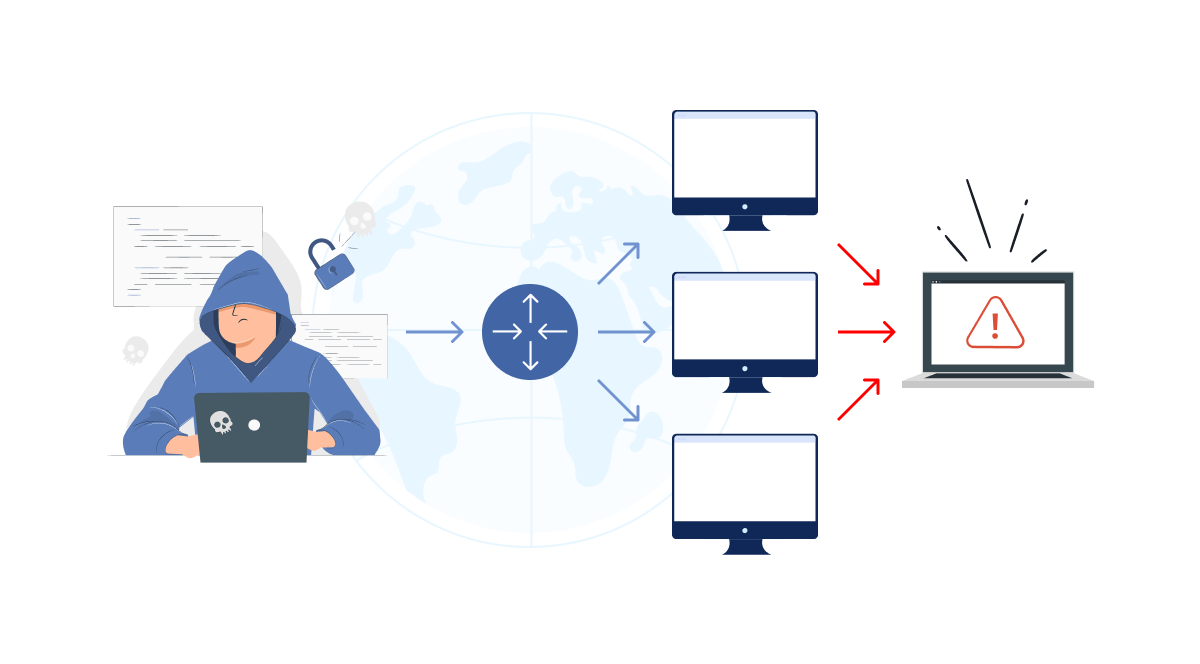What is a Smurf Attack?
A smurf attack is a type of distributed denial-of-service (DDoS) attack that exploits the ICMP (Internet Control Message Protocol).
In this attack, the malicious actor sends a large number of ICMP requests to broadcast addresses across a network. This triggers a cascade of responses from all devices on the network, which are directed back to the spoofed source IP address—belonging to the victim. As a result, the original request becomes amplified and the victim’s server is overwhelmed, potentially causing it to crash.
How it Works
The Smurf attack is launched from the attacker’s computer. It is aimed at a router that interacts with a large number of devices. The hacker sends large ICMP requests to the router, as a result of which the connected devices respond to the ping.

Any device connected to this router that can respond to ping will not be able to recognize fake IP addresses. As a result, the original request is amplified and the victim’s server will be disabled.
Types of Smurf Attacks
- Standard Smurf Attack occurs when the victim’s network is at the center of a stream of ICMP request packets. The packets contain the source address, which is set to the broadcast network address of the intended target. If the attack is successful, every device connecting to the target network can then reply to the ICMP request with an echo request, which can result in tons of traffic and probably result in a system crash.
- Advanced Smurf Attack starts with the echo request’s source being built to respond to a third-party victim. After that, the third-party victim will receive an echo request that comes from the target subnet.
Methods of Protection
Smurf attack is considered relatively easy to execute and sometimes challenging to detect. Despite being an older type of DDoS attack it can still be highly disruptive if basic security practices are neglected. With the right measures, smurf attacks can be effectively mitigated. Deploying embedded or scrubbing technology to stop DDoS attacks will considerably scale back the impact on your network, business, and customers.
Learn more about smurf attacks and how to prevent them in our blog.




















